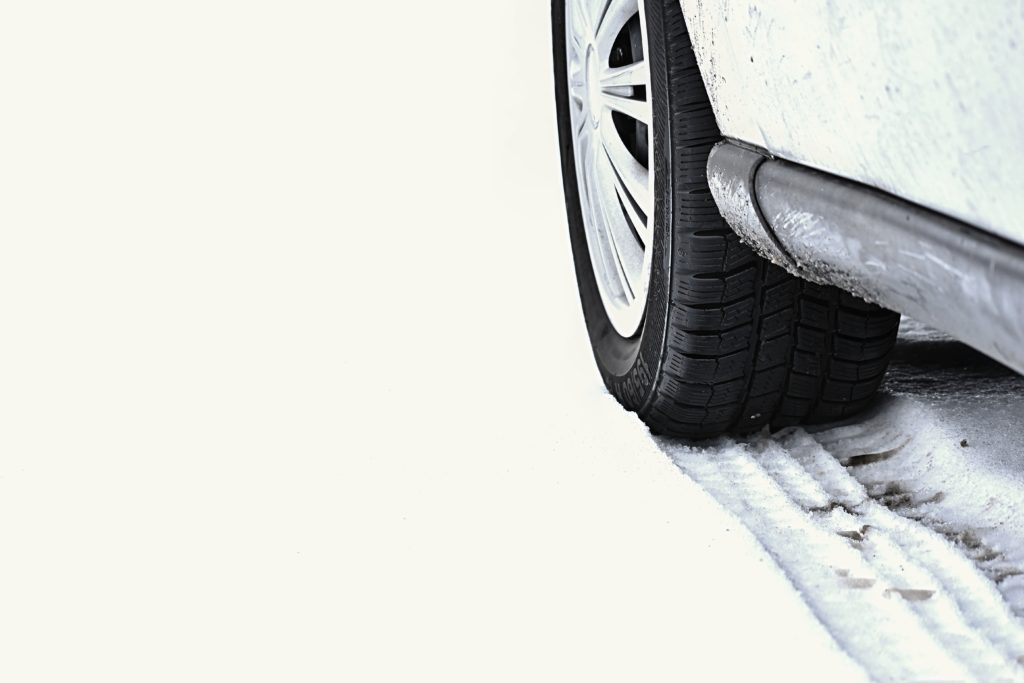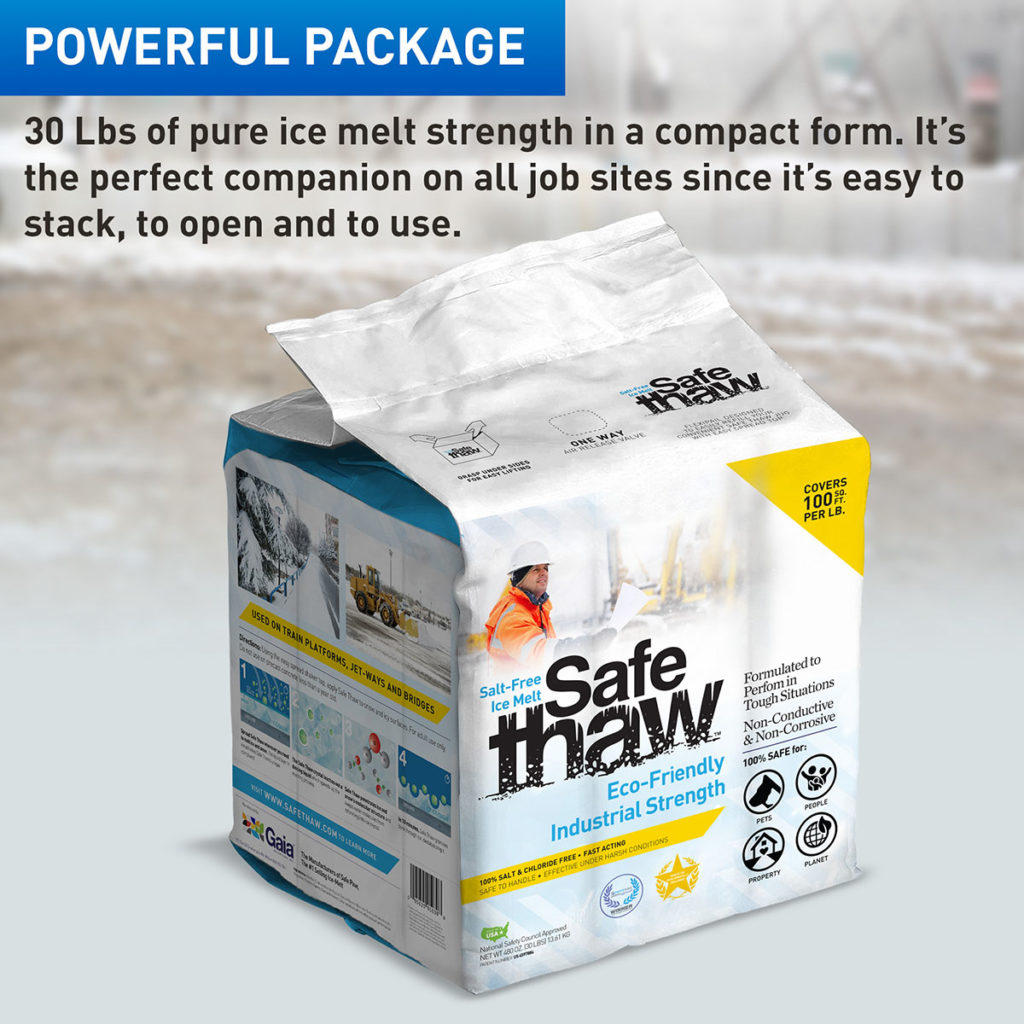How To Clean Tire Marks From Your Concrete Driveway

Tire and skid marks on concrete garage floors and driveways are usually not very nice. When the wheels of a car sit on hot concrete for a long time or you spin wheels, these marks appear.
Tire marks on concrete, bricks, and natural stone pavers will be easier to see than on asphalt. However, tire marks on concrete can be tough to get rid of, mainly if you use old ways of cleaning.
Even though it’s hard to stop, proper cleaning will prevent the buildup that usually makes it harder to clean tire marks. Moreover, removing these marks from a worn-out or salt-damaged driveway is difficult. Salt corrodes the concrete and makes it susceptible to further damage. Therefore, knowing what is safe for concrete to melt ice is vital.
How to Clean Tire Marks from Your Concrete Driveway
Tire marks on concrete driveways can diminish the aesthetic appeal of your property. These marks, caused by the transfer of rubber compounds, can be challenging to remove without the right tools and techniques. However, with effective cleaning methods, preventative measures, and regular maintenance, you can restore your driveway to its pristine condition. This guide explores how to clean tire marks, prevent their recurrence, and protect your concrete surfaces for the long term.
Preventative Measures to Avoid Tire Marks
Taking preventative steps can save time and effort in the long run by minimizing the occurrence of tire marks.
Apply a High-Quality Concrete Sealer
Using a concrete sealer creates a protective barrier that prevents rubber compounds from bonding with the surface. Sealers not only protect against tire marks but also guard against stains, moisture, and deicing chemicals. Reapply sealants every two to three years for maximum effectiveness.
Use Protective Mats or Pads
Placing protective mats in high-traffic areas or where vehicles are frequently parked can reduce the direct contact between tires and the driveway. This is particularly useful for garages or areas with heavy use.
Maintain Proper Tire Pressure
Under-inflated or over-inflated tires can create unnecessary friction, increasing the likelihood of rubber transfer. Regularly checking and maintaining proper tire pressure helps prevent tire marks.
Environmental and Safety Considerations
Choosing the right cleaning agents is essential to protect the environment and ensure safety for your household.
Eco-Friendly Cleaning Solutions
Many commercial cleaners contain harsh chemicals that can harm surrounding vegetation and water systems. Opt for biodegradable or environmentally friendly products to minimize ecological damage. Household solutions like baking soda and vinegar are effective alternatives that are safe for the environment.
Avoid Harmful Chemicals
Avoid cleaners that contain petroleum distillates or other toxic substances. These products may be effective at removing tire marks but can leach harmful chemicals into the soil.
Impact of Deicing Products
Winter maintenance products like deicing salts can exacerbate tire marks and damage concrete surfaces. Switching to a concrete safe ice melter, such as Safe Thaw, minimizes chemical exposure and protects both the driveway and the surrounding ecosystem.

Safe Thaw
Safe Thaw was created as the ice management solution for tough winter environments. Ideal in commercial and industrial properties, shops, government agencies, bridges, and construction.
Steps to clean tire marks from your concrete driveway
- Clean your driveway using a broom to eliminate leaves, soil, and other loose dirt. So you will be able to see the marks you are working with.
- Splash plain water on the marks and wait 2–5 minutes for the water to soften the stain. Then, you can use a deck brush to scrub. Later, rinse with water.
- Mix dish soap and water together, rub the mixture on the stain and let it sit for 5 minutes. Next, scrub it with a bristle brush and rinse it with water. If the soap can eliminate grease, the tire marks should immediately come off the concrete.
- A concrete cleaner or degreaser can help remove the marks if they are still there. Apply any of it and let it sit for 15 minutes. Then, use a soft bristle brush to scrub the surface. Finally, use a garden hose to wash the stains away.
- As a last resort, you can use a pressure washer with your concrete degreaser to clean up tire marks on concrete.
Comparative Analysis of Cleaning Methods
When it comes to removing tire marks, several methods are available, each with its own benefits and drawbacks.
Household Remedies
- Baking Soda and Water: Create a paste using baking soda and water. Apply it to the affected area and scrub with a stiff-bristled brush. This method is cost-effective but requires significant effort for deep stains.
- Vinegar and Dish Soap: Mix equal parts of vinegar and dish soap with water. Apply the solution, let it sit for 10 minutes, and scrub. While eco-friendly, this method may not work for older or stubborn stains.
Commercial Cleaners
- Degreasers: Products like Simple Green are highly effective at breaking down rubber compounds but may be more expensive than household remedies.
- Efflorescence Removers: Designed specifically for concrete, these cleaners can handle tough stains but require careful handling to avoid surface damage.
Mechanical Cleaning Tools
- Pressure Washers: These provide quick and effective cleaning but can damage unsealed concrete if used at high pressure.
- Power Scrubbers: Machines with rotating brushes remove tire marks efficiently but are a more expensive option suitable for larger driveways.
Choosing the right method depends on the severity of the tire marks, budget, and environmental considerations.
Long-Term Maintenance Practices
Regular maintenance is key to preventing tire marks and keeping your concrete driveway looking its best.
Establish a Cleaning Schedule
Routine cleaning prevents the buildup of stains and tire marks. Sweep your driveway regularly and wash it with mild soap and water every few weeks.
Inspect and Seal Cracks
Cracks in the concrete can trap rubber compounds, making tire marks harder to remove. Inspect your driveway regularly and seal any cracks to maintain a smooth surface.
Use Protective Mats in High-Traffic Areas
As mentioned earlier, mats in garages or frequently used sections of the driveway can prevent tire marks and reduce wear and tear.
Choose Safe Deicing Products in Winter
Winter weather introduces additional challenges for maintaining a clean driveway. Traditional salts can exacerbate tire marks and damage concrete. Using a concrete safe ice melter helps protect your driveway while ensuring safety for pets and the environment. Products like Safe Thaw are chloride-free and effective in freezing temperatures.
Considering Concrete Driveway Cost and Maintenance
Investing in a concrete driveway requires long-term care to maximize your investment. The concrete driveway cost ranges from $5 to $15 per square foot, depending on factors like thickness and finish. Regular maintenance, including sealing and cleaning, helps extend the lifespan of your driveway and ensures its aesthetic appeal.
Is Salt Bad for Dogs and Your Driveway?
Using deicing salts during winter not only harms your concrete but also poses risks to pets. Salt can irritate dogs’ paws and cause gastrointestinal issues if ingested. Opting for an ice melt safe for wood decks and pets, such as Safe Thaw, eliminates these risks while providing effective ice control. These products protect your furry friends and your concrete surfaces simultaneously.
What is safe for concrete to melt ice
Any chloride-containing substance, like sodium chloride, potassium chloride, or calcium chloride, may be safe in other situations but not in concrete, especially new concrete. These acidic compounds break down the glue that holds concrete together. So when salt gets into the pores, freeze-thaw damage to the concrete happens more often. Because chlorides can quickly get through the thin layer of iron oxide that protects steel and start the corrosion process, they can cause reinforcing steel to rust.
Safe Thaw: A concrete-safe ice melt
Safe Thaw is a patented compound with two effects. First, the liquid starts melting the ice right away and breaks up its surface tension at the same time. It makes it easy for the crystal core to quickly break through the ice and make it less stable, which speeds up the melting process. It is happening while Safe Thaw’s traction agent keeps people from slipping. Safe Thaw draws heat, which makes it work even better.
100% salt & chloride-free, fast acting Ice Management Solution
Conclusion
Tire marks on concrete driveways can be a nuisance, but they are manageable with the right cleaning techniques and preventative measures. Whether using household remedies, commercial cleaners, or mechanical tools, understanding the best approach for your driveway is key. Regular maintenance, such as sealing and cleaning, along with using environmentally friendly products like concrete safe ice melter, ensures your driveway remains durable and visually appealing.
By following these tips, you’ll not only enhance the longevity of your concrete driveway but also reduce long-term costs associated with repairs and replacements. Prioritizing eco-friendly and pet-safe practices keeps your driveway clean while protecting the environment and those you care about.
Try Also Our Other Winter Safety Products:
Safe Paw
The Original and #1 Selling Pet and Child Safe Ice Melt for over 20 years. Guaranteed environmentally safe –It won’t harm animals or children, and it won’t damage your property. That’s Safe Paw. Safe Paw can change how winter affects our planet.

Walk On Ice
The handy disposable canister can be taken everywhere, with the same 100% naturally occurring minerals that provide instant traction on ice or snow. Use it on sidewalks, steps, or as an instant traction agent for your car.



